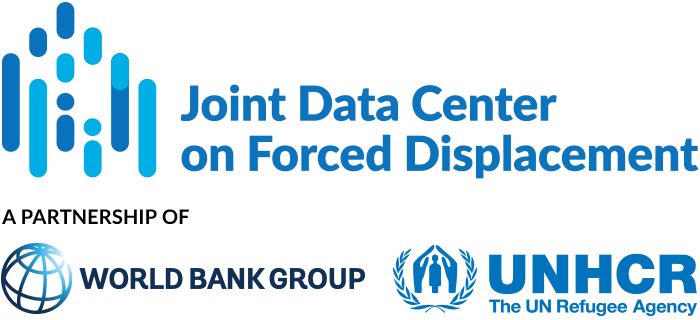This article examines the association between perceived neighborhood social cohesion (P-NSC)—a measure of community trust, attachment, safety, and reciprocity—and the incidence of intimate partner violence (IPV) and controlling behaviors against women among Somali refugees residing in Bokolmayo camp, Dollo Ado, Ethiopia. At the time of the study, Bokolmayo camp had a registered population of over 40,000 Somali refugees.
The analysis is based on 2019 data from Bokolmayo camp, part of a larger study on social networks. Sixteen households were randomly selected, and their connections were identified using snowball sampling until a sample size of at least 300 residents was achieved. The questionnaire covered demographics (age, ethnicity, literacy, education level, marital status, partner characteristics), displacement, alcohol and khat use, social networks, neighborhood cohesion, social norms, women’s experiences of physical, sexual, and emotional IPV, and men’s perpetration of physical IPV.
Multiple logistic regression models estimated the association between P-NSC and IPV. The final models for women’s IPV experiences controlled for years displaced, ethnicity, polygamy, pre-displacement neighborhood type, literacy, years in camp, monthly income, cash transfer amount, and reason for displacement. For men’s IPV perpetration, the model controlled for employment, education, polygamy, ethnicity, and personal khat use.
The final sample included 155 women and 147 men, excluding unmarried individuals. Women were predominantly 18-39 years old, largely unemployed, from nomadic and urban areas, and displaced due to natural disasters or safety concerns. Men were mostly over 39, employed, from suburban and urban areas, and displaced due to safety threats. Both groups were mainly from minority ethnic clans, with low rates of alcohol and khat use. A substantial proportion of women (24 percent) and a smaller proportion of men (6 percent) reported being in polygamous unions. Approximately 37 percent of women reported experiencing physical IPV in the past month, and in the past year, 19 percent reported physical, 10 percent sexual, and 16 percent emotional IPV; 43 percent reported controlling behaviors. Among men, 44 percent reported perpetrating physical IPV in the past month.
Main results:
- Various individual factors were associated with P-NSC for both women and men. Women’s P-NSC was influenced by neighborhood type before displacement, reason for displacement, monthly income/cash transfer amount, and partner khat use, with literacy, polygamy, and years in camp showing marginal associations. For men, P-NSC was linked to education, employment, personal khat use, age, ethnicity, and neighborhood type before displacement.
- Various individual factors were associated with women’s experiences of emotional, sexual, and physical IPV, and men’s perpetration of IPV. For women, living in an urban neighborhood before displacement, being displaced for reasons other than natural disaster or safety, and partner khat use were linked to experiencing emotional, sexual, and physical IPV in the past year, as well as physical IPV in the past month. Higher monthly income/cash transfers were associated with physical IPV in the past month, while polygamy was linked to physical IPV. Controlling behaviors were associated with more years in the camp and lower income levels. For men, ethnicity, age, pre-displacement neighborhood type, education, reason for displacement, and personal khat use were associated with the perpetration of physical IPV in the past month.
- Low P-NSC among men was significantly associated with increased odds of perpetrating physical IPV in the past month. Men with low P-NSC had 20 times higher odds of perpetrating physical IPV compared to those with high P-NSC in crude analyses, and this association remained statistically significant after adjusting for covariates.
- There was a strong and significant link between women’s P-NSC and controlling behaviors by an intimate partner, but not with other forms of IPV. Women with low P-NSC had 90 percent lower odds of experiencing controlling behaviors by a partner compared to those with high P-NSC, and this association persisted after adjusting for covariates. No significant associations were found between women’s P-NSC and reported experiences of past-month physical IPV or past-year physical, sexual, or emotional IPV in adjusted models.
The findings suggest that social cohesion may be more directly associated with IPV perpetration rather than the experience of IPV. Controlling behaviors by an intimate partner, which reflect a partner’s influence on a resident’s interactions with their neighborhood (e.g., keeping a partner away from family, expecting permission to leave home or access healthcare), appear more directly related to social cohesion than other forms of IPV in this context.
Reconciling these results with a previous study in refugee camps in South Sudan, Kenya, and Iraq (Wachter et al, 2018), which found that lower social cohesion left women unsupported, isolated, and less likely to seek help or access resources, potentially increasing their risk of IPV, the authors suggest that in contexts where IPV is normative, high social cohesion may not protect against violence or controlling behaviors. Neighbors may not feel obligated to intervene or provide support and may collectively reinforce such behaviors. Alternatively, controlling behaviors can be associated with more severe forms of IPV; women experiencing these behaviors may be more likely to seek social support and thus report higher levels of trust in their community. These insights highlight the complex role of social cohesion in IPV dynamics and the need for nuanced interventions.


